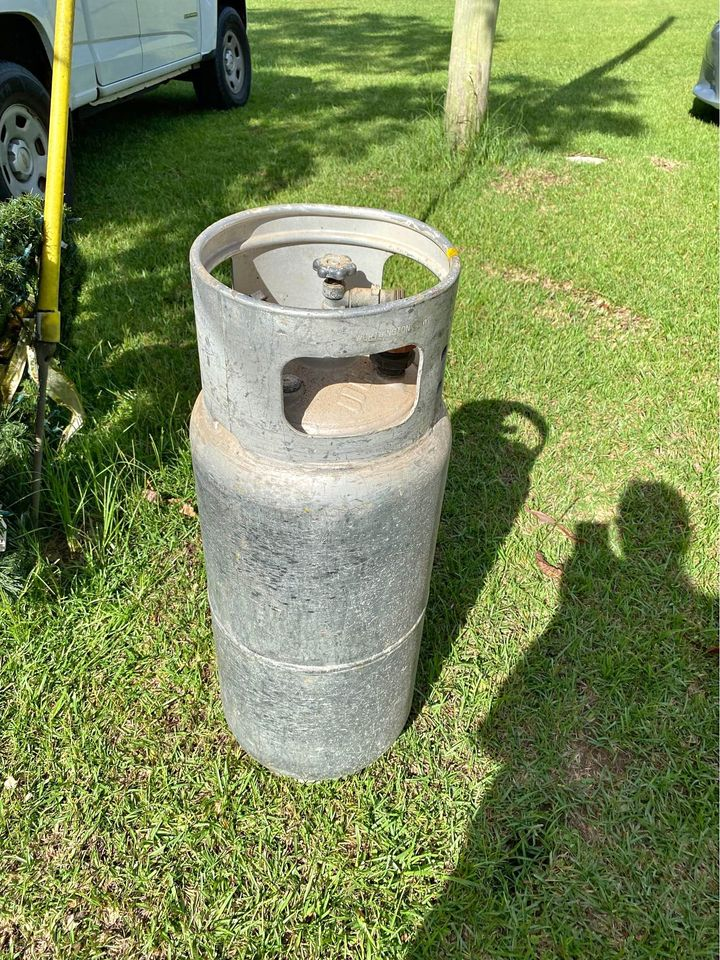In a world filled with sleek, modern appliances, it’s easy to forget the humble origins of some of our most beloved kitchen tools. If you’ve ever stumbled upon a curious aluminum canister with a black plastic handle, you might find yourself wondering, “What is this?” The label on it might even ask the same question, sparking curiosity and a wave of nostalgia. Let’s uncover the mystery of this vintage kitchen tool, the “Little Chef,” and learn about its fascinating history and surprising functionality.

At first glance, the “Little Chef” canister seems simple, but its design is actually quite intriguing. The two small holes on the top and the three narrow slits along the bottom edge hint at its purpose, while the removable bottom with an array of pinholes adds another layer of complexity. The canister’s materials—aluminum with a sturdy black plastic handle—speak to a time when durability and practicality were paramount in kitchenware design.
This curious canister is none other than a vintage stovetop potato baker, commonly known as a “Potato Baker” or “Potato Cooker.” Before the widespread use of microwaves and advanced ovens, this handy device was a staple in many households for baking potatoes to perfection. It was a simple, yet effective solution for a common culinary need.
The “Little Chef” was designed to ensure even heat distribution around the potatoes placed inside. The aluminum canister, with its built-in ventilation holes, allowed for a consistent flow of heat, while the small pinholes in the removable bottom ensured that steam could escape, preventing the potatoes from becoming soggy. The narrow slits near the bottom edge also contributed to this ventilation, making sure the heat circulated properly.
Using the “Little Chef” was a straightforward process. You would simply place your potatoes inside the canister, secure the bottom, and place it directly on a stovetop burner. As the canister heated up, the potatoes would bake evenly, with the black plastic handle making it easy to move the canister off the stove when the potatoes were done. This method of baking not only saved time but also conserved energy compared to using a large oven.
For many, the “Little Chef” is a nostalgic reminder of simpler times, when meals were prepared with care and patience. It’s a relic from an era when kitchen gadgets were designed to be practical, multifunctional, and built to last. It’s a testament to a time when people valued quality and craftsmanship over fleeting trends.

While the “Little Chef” is primarily known for its potato-baking capabilities, it can also be used for other purposes. It can be used to steam vegetables, cook eggs, or even warm up bread. Its versatility makes it a valuable addition to any kitchen, even in the modern era.
Today, while most people turn to microwaves or ovens for their potato-baking needs, the “Little Chef” remains a charming piece of culinary history. It’s often found at flea markets, antique shops, or passed down through generations, carrying with it the stories of families and their culinary traditions.
The “Little Chef” aluminum canister is more than just an odd-looking kitchen tool—it’s a symbol of the innovation and resourcefulness of the past. It’s a reminder that even in the absence of advanced technology, people were able to create ingenious solutions for everyday tasks.
Whether you recognize it as a potato baker or simply see it as a curious relic, the “Little Chef” serves as a reminder of the evolution of cooking technology and the timeless appeal of a perfectly baked potato. It’s a testament to the fact that sometimes, the simplest solutions are the most effective.
The next time you come across a “Little Chef” aluminum canister, don’t just see it as an odd-looking kitchen tool. See it as a symbol of the past, a reminder of the ingenuity and resourcefulness of generations before us. See it as a testament to the enduring appeal of a perfectly baked potato.


